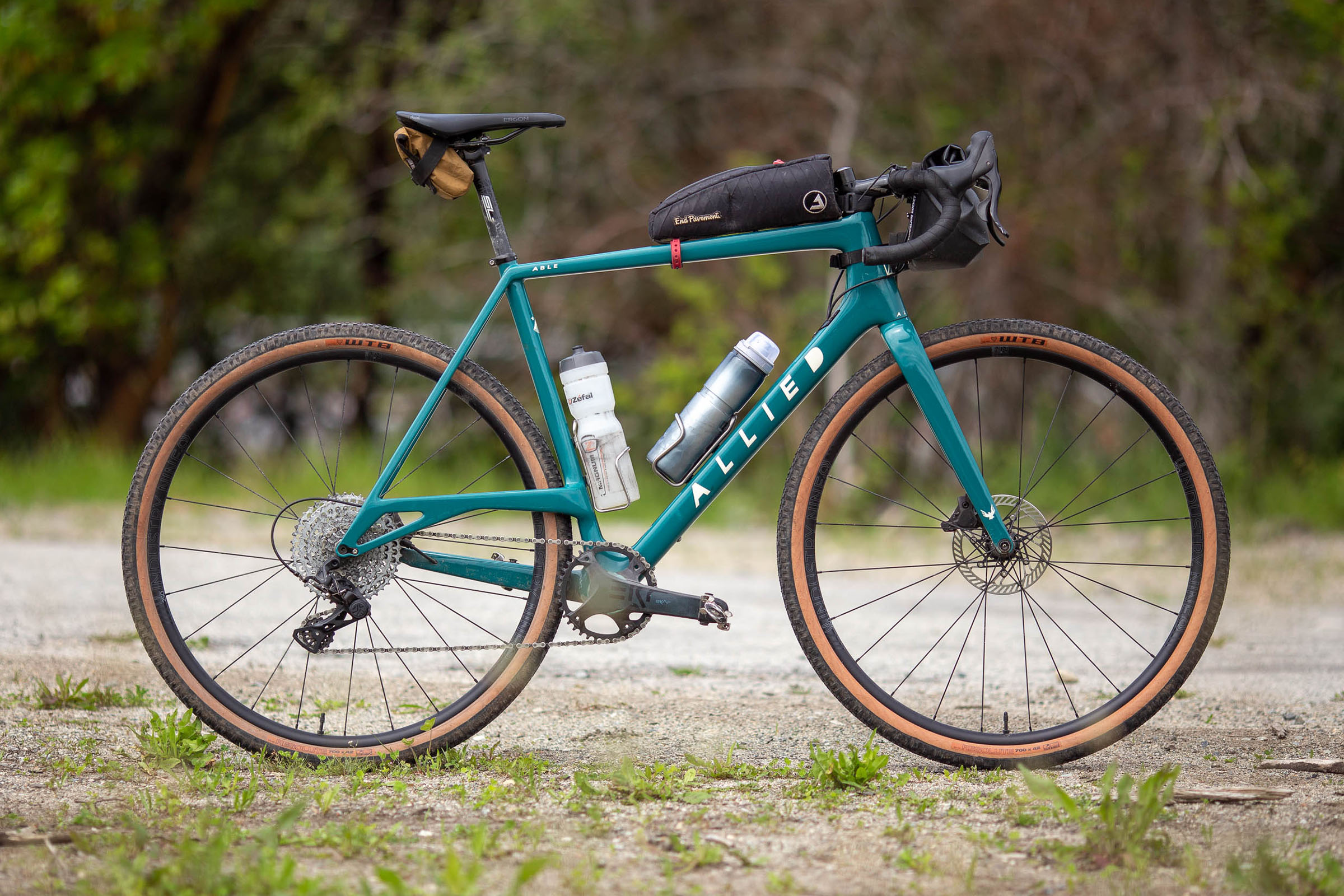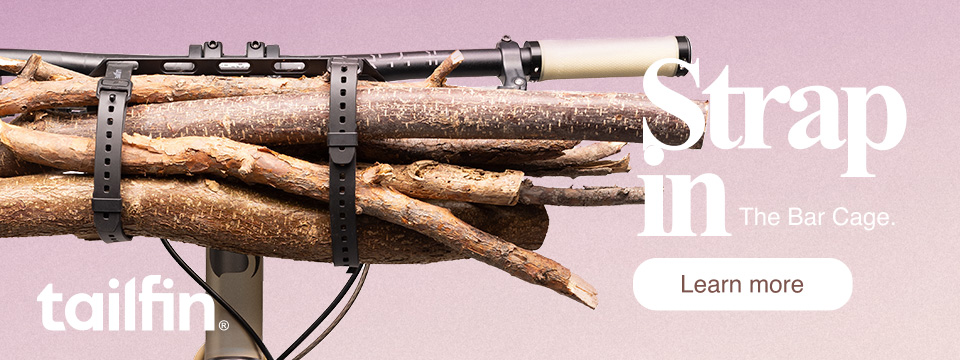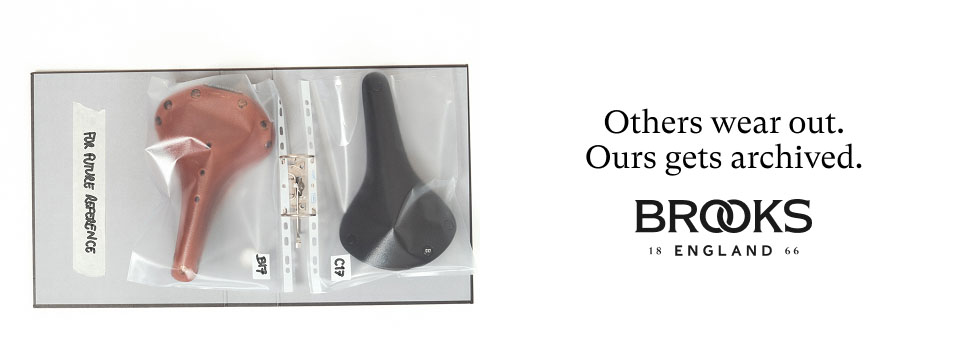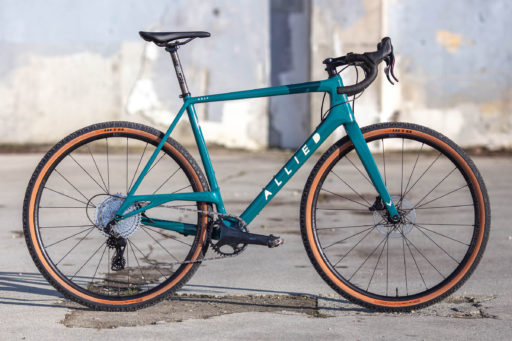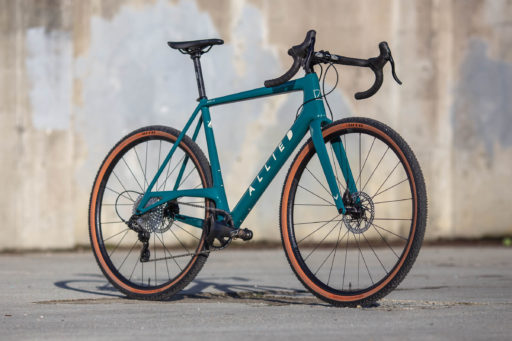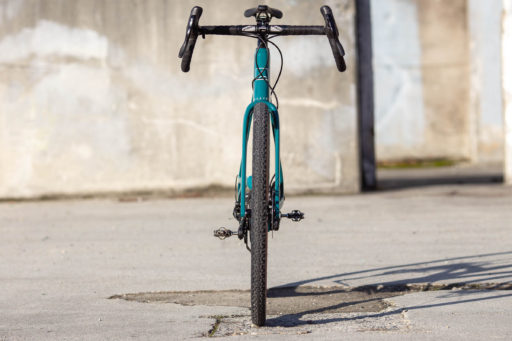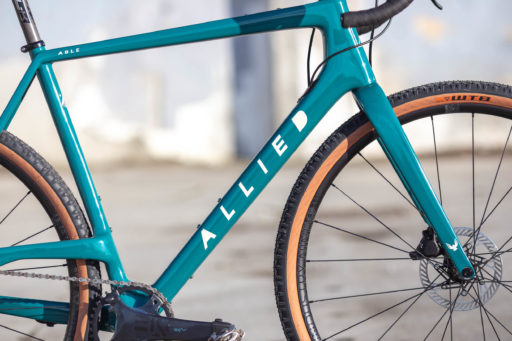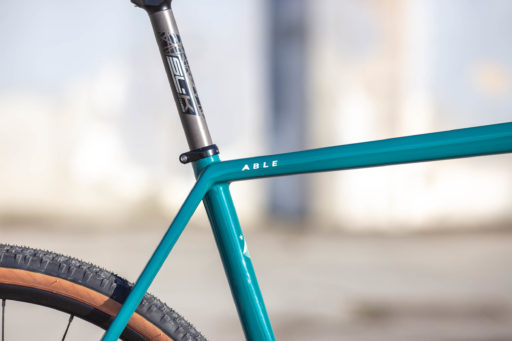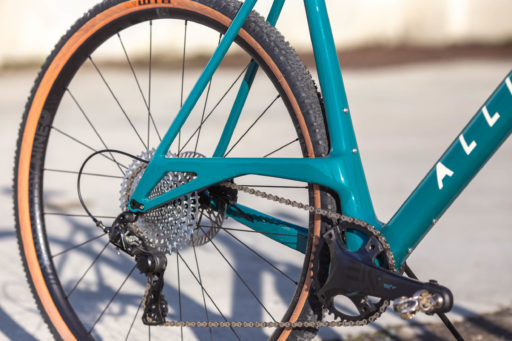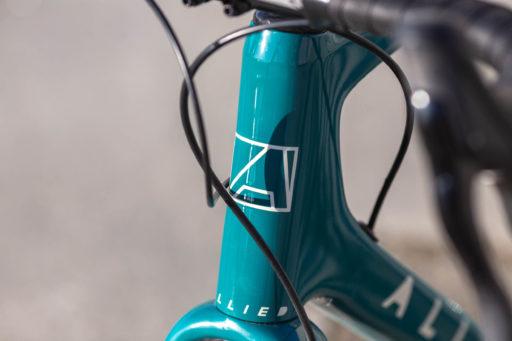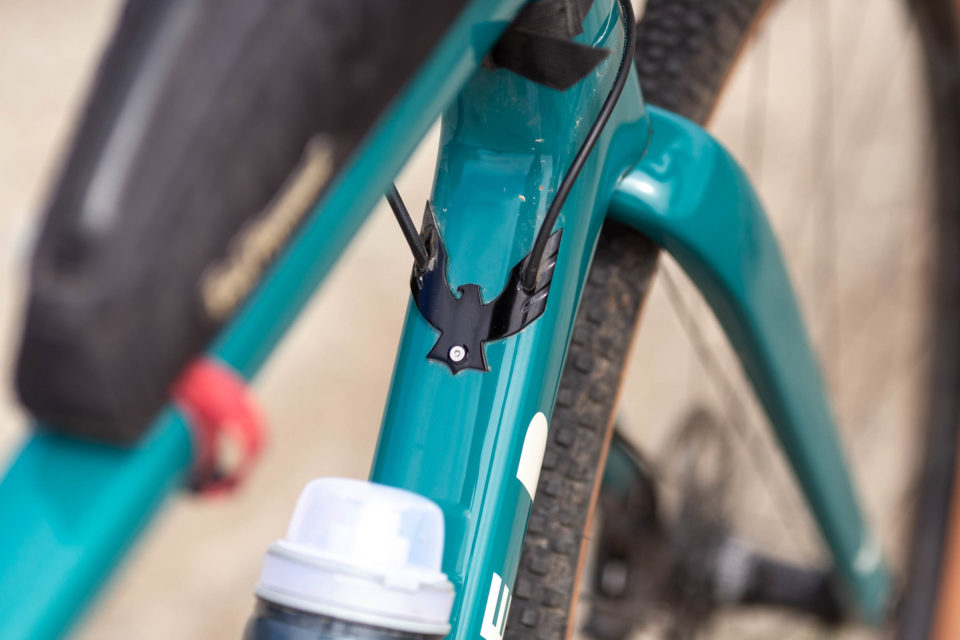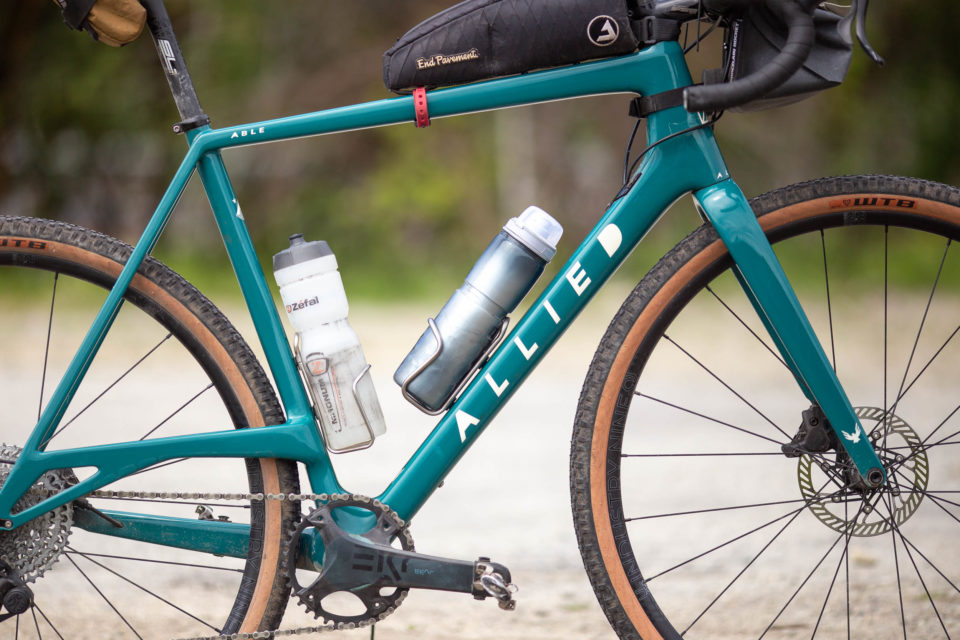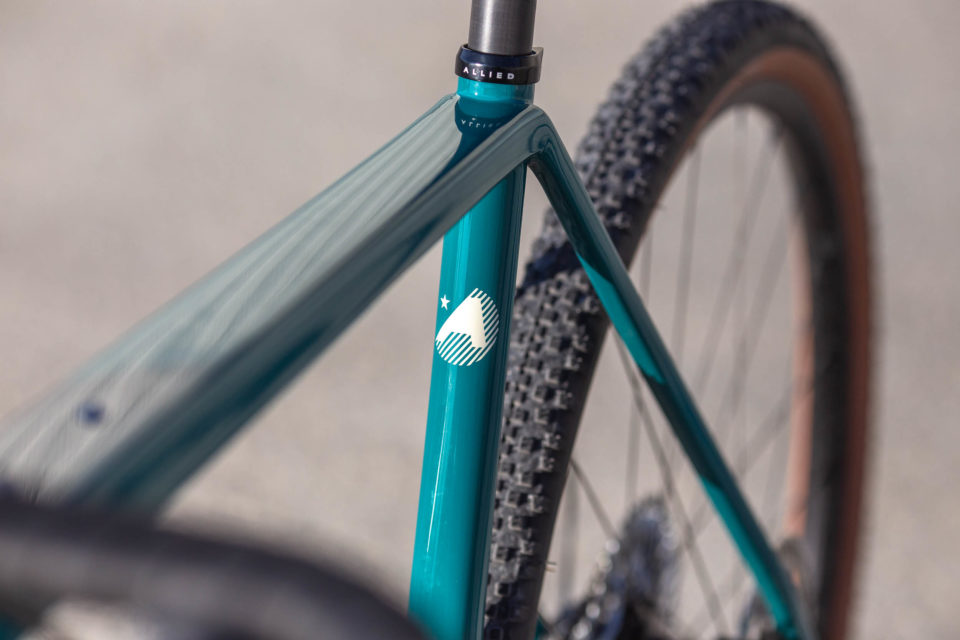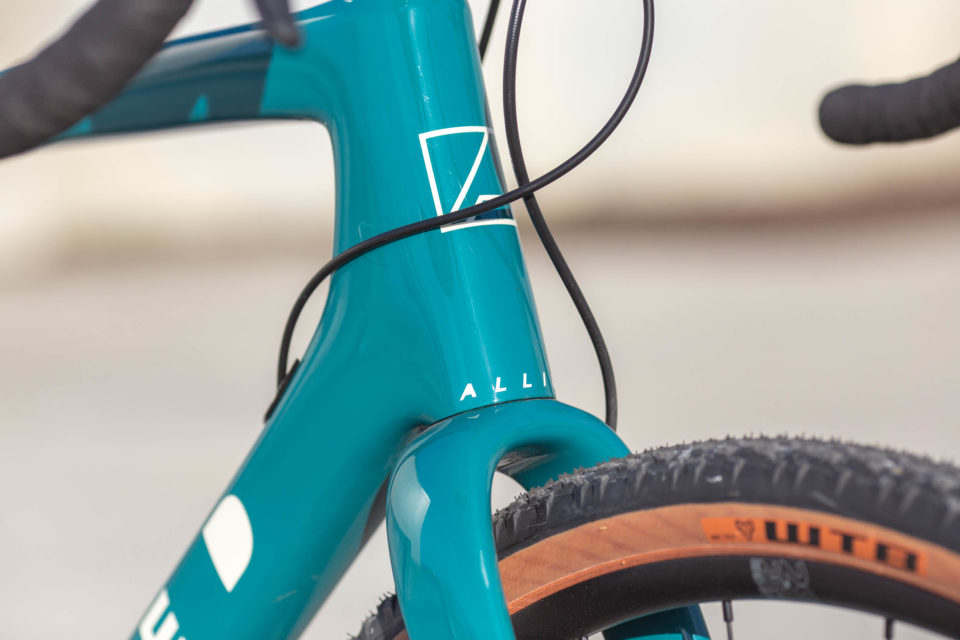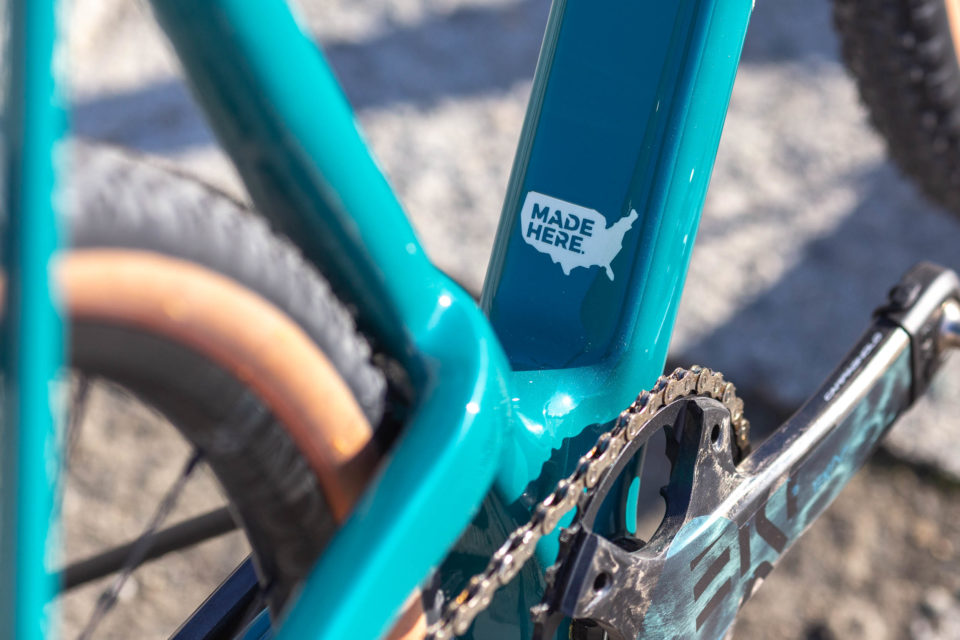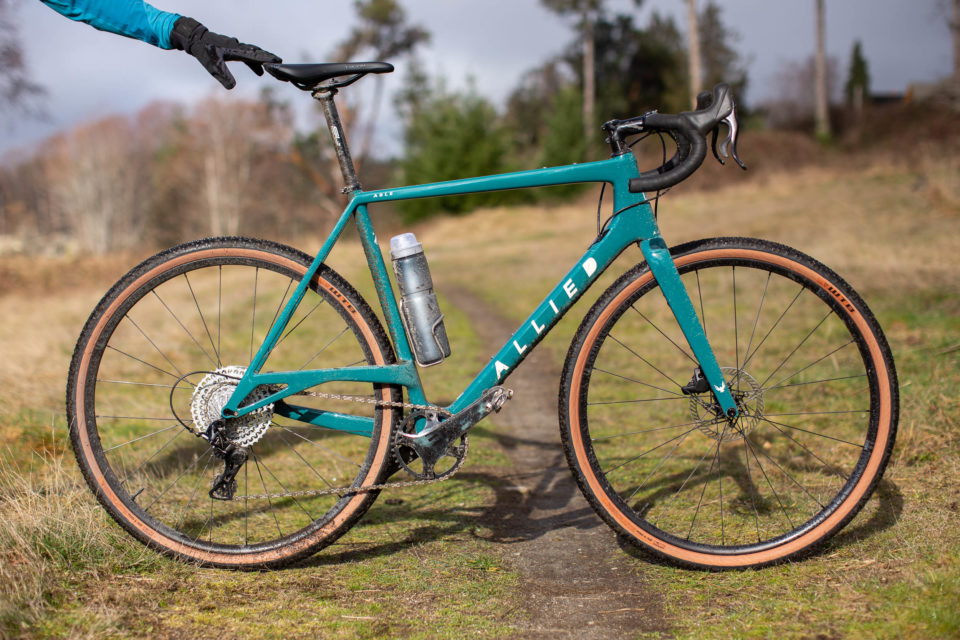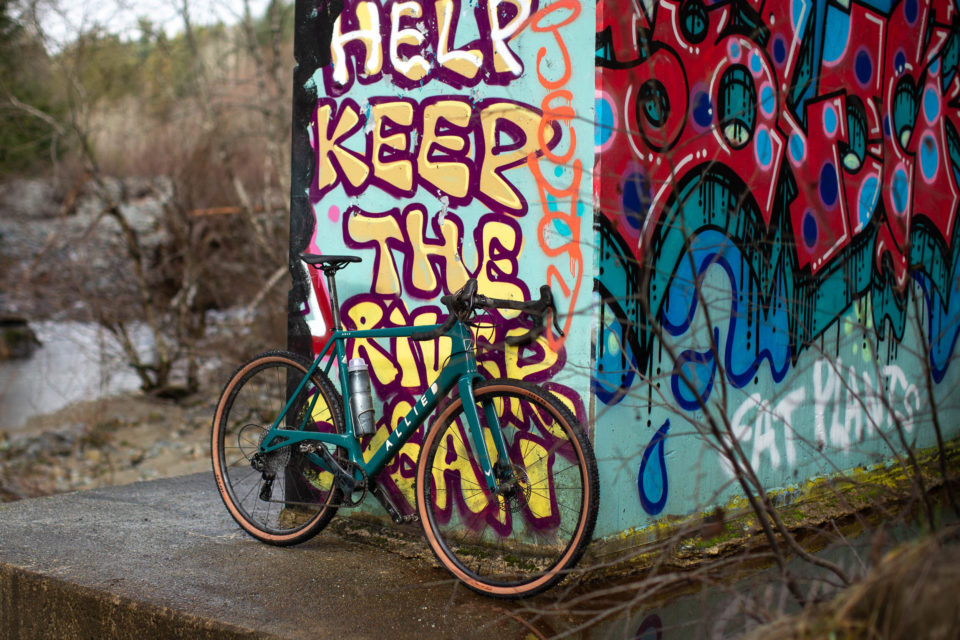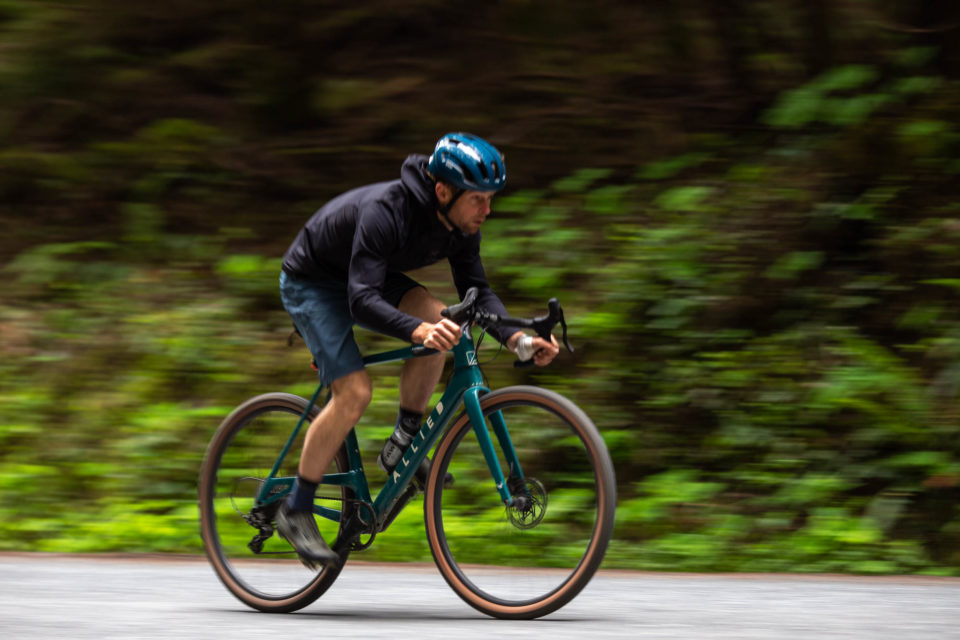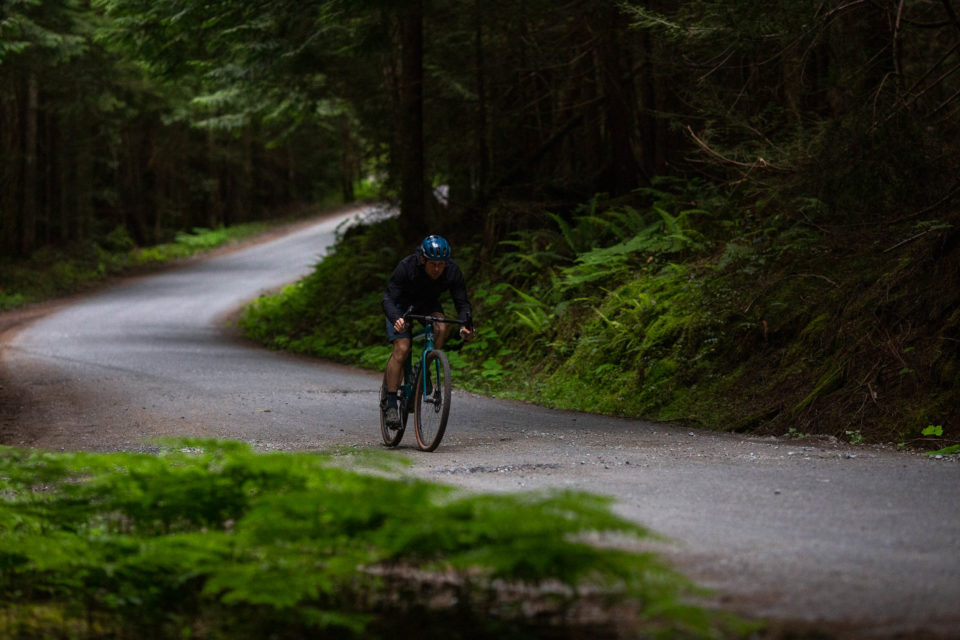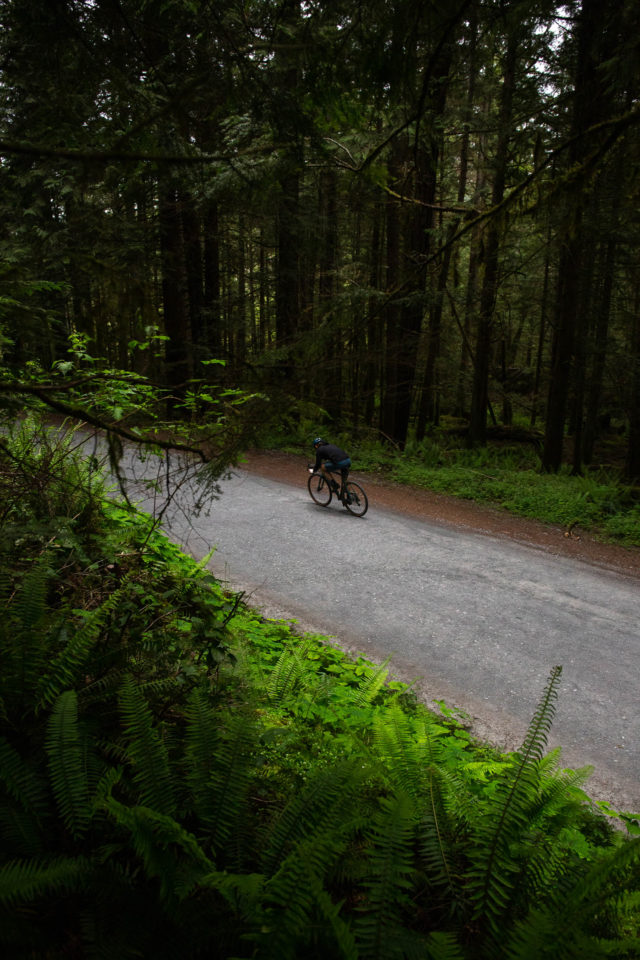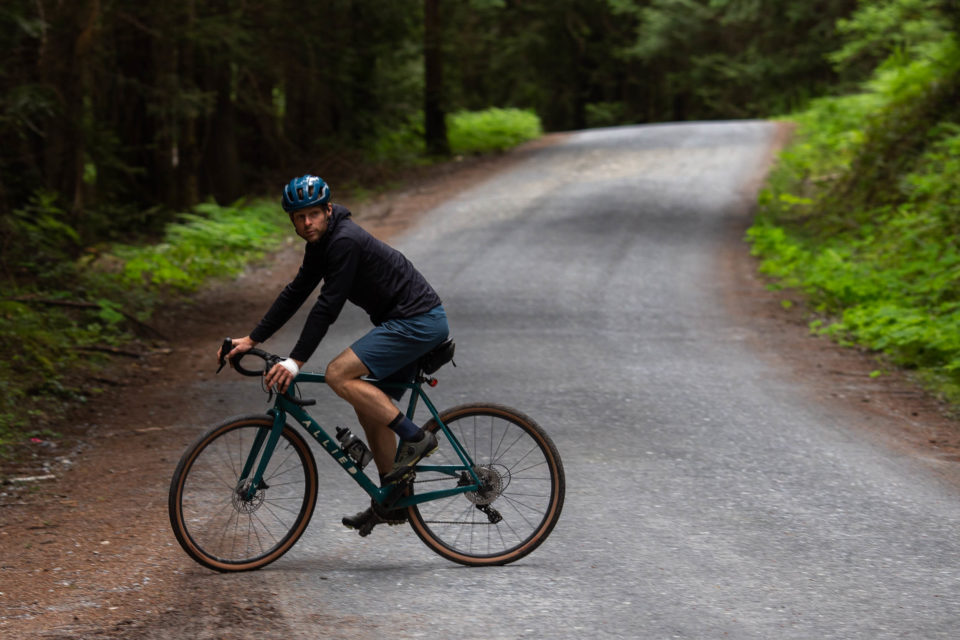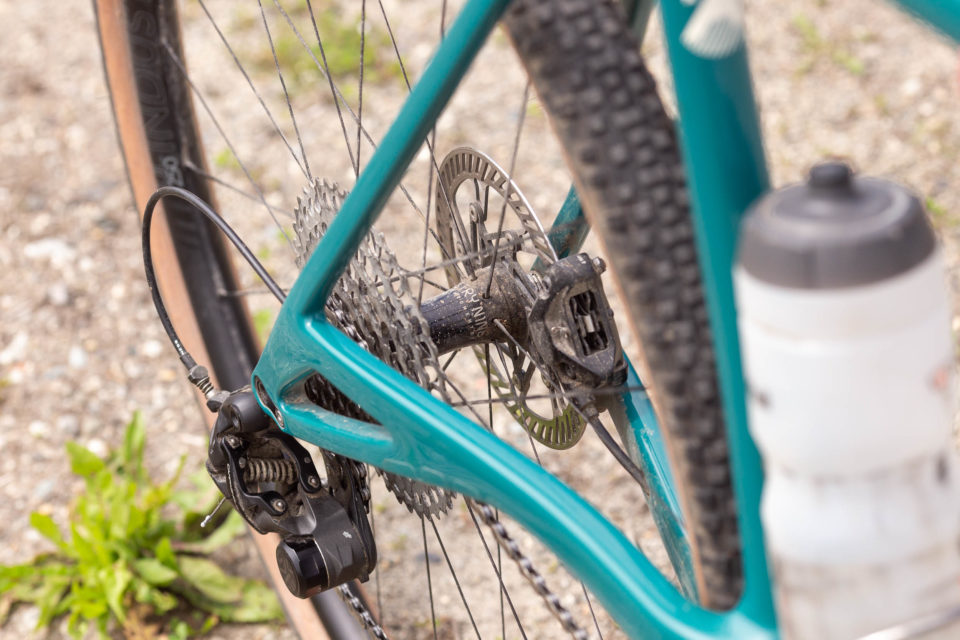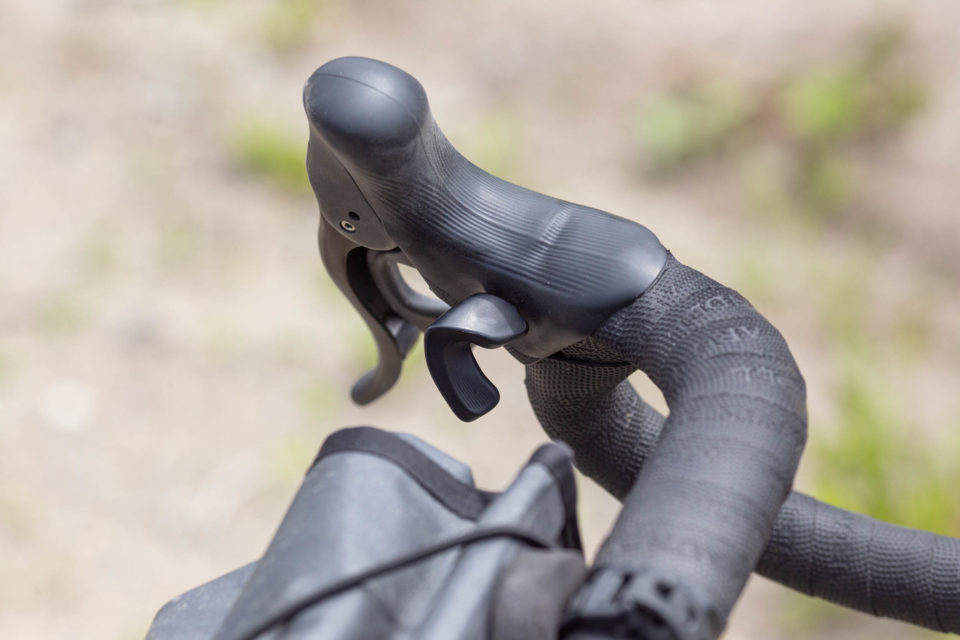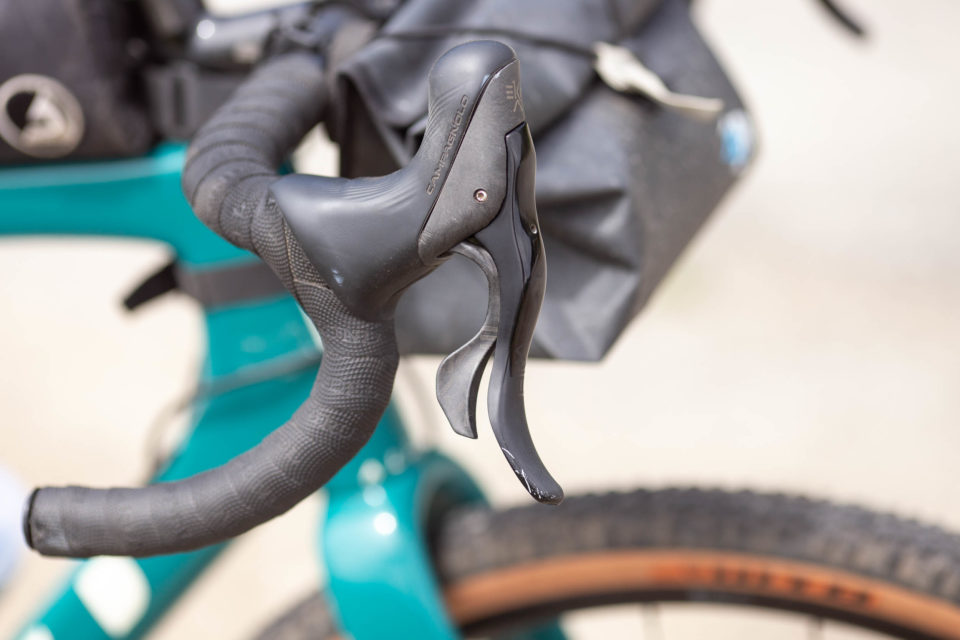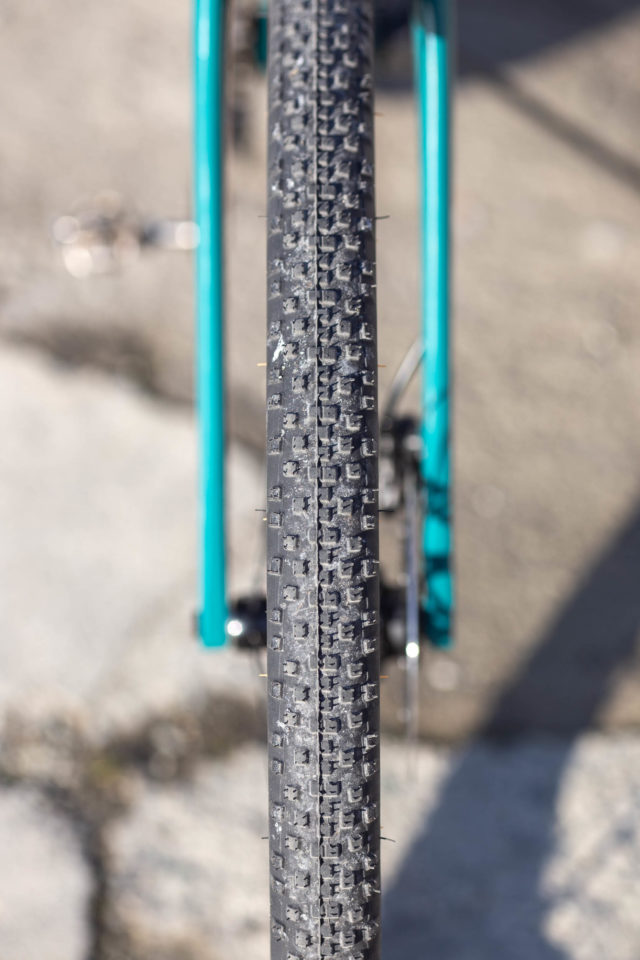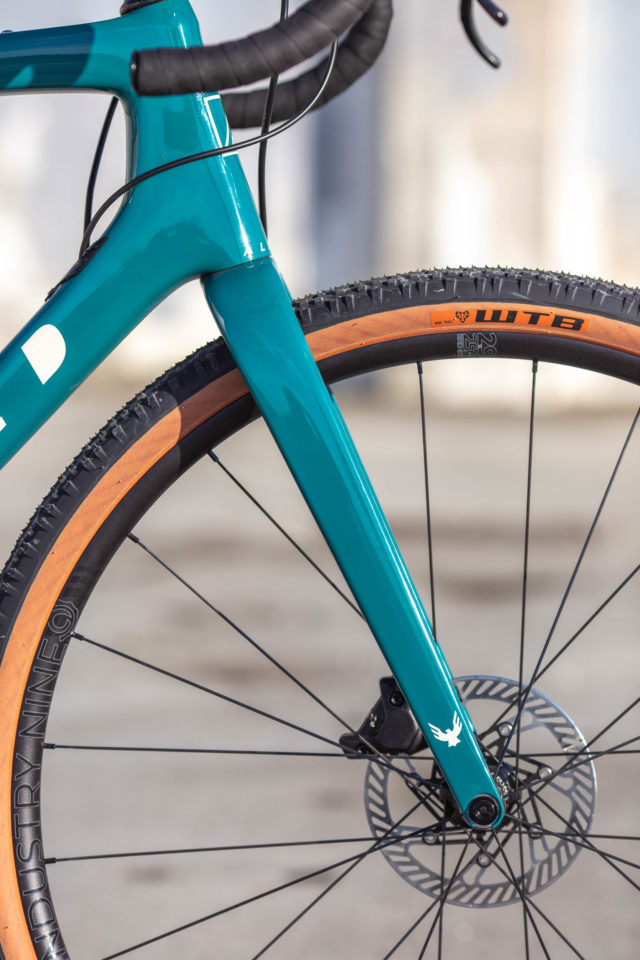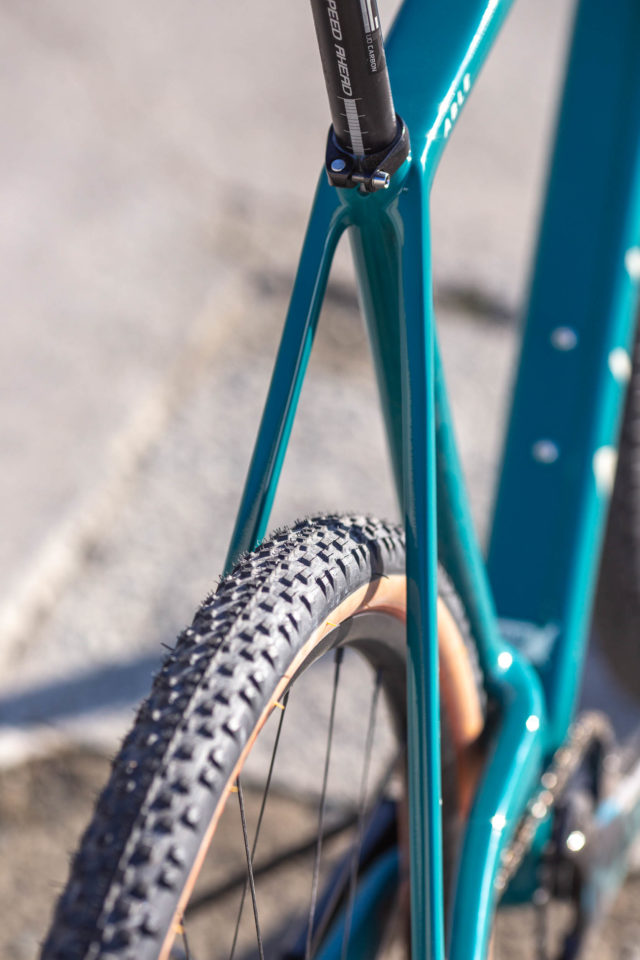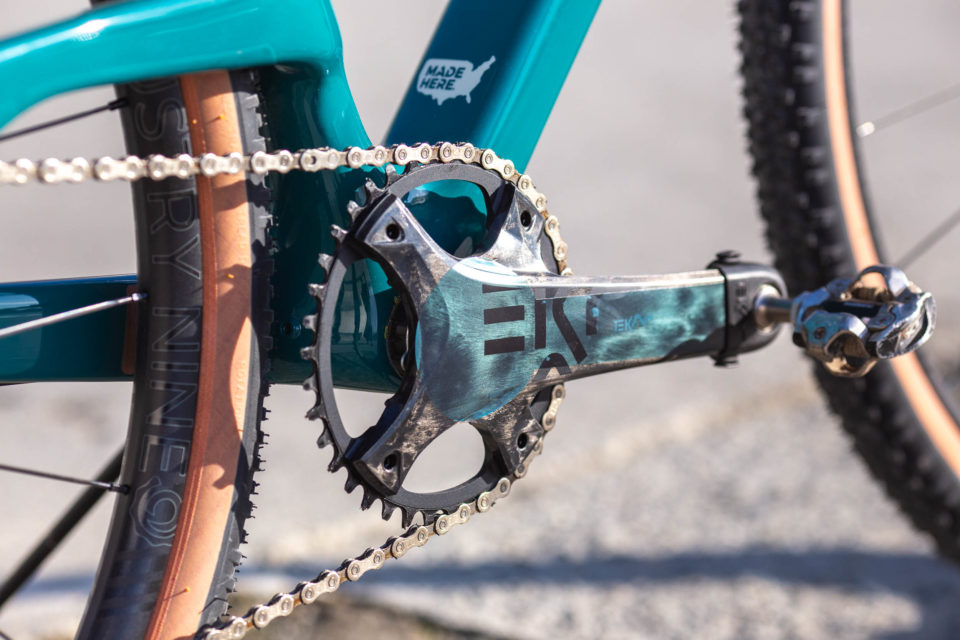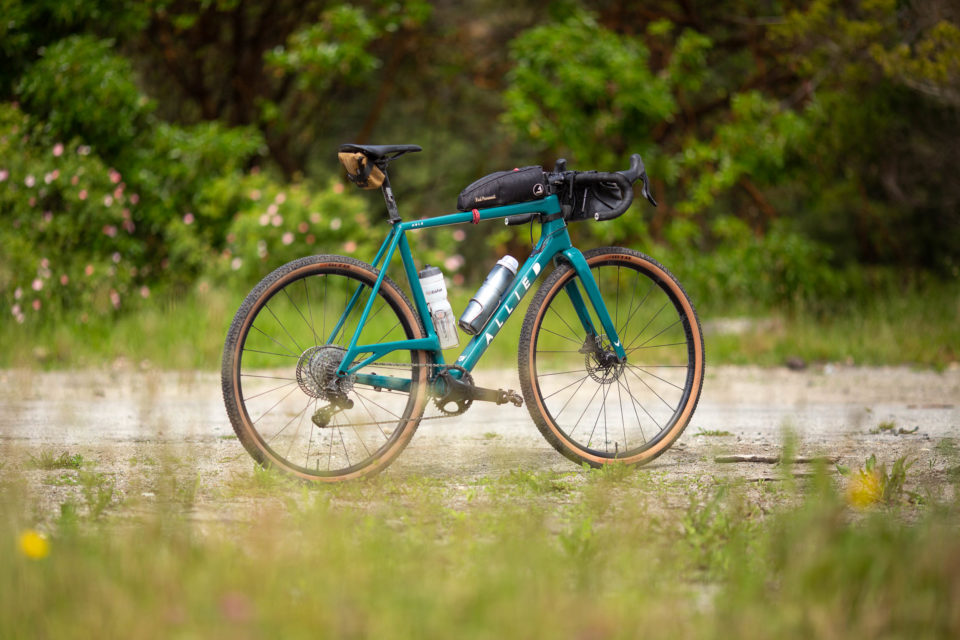Allied Able Review: American Made Speed Machine
The Allied Able is a full-carbon, US-made gravel bike that the brand claims is better suited for rougher roads and longer rides than the rest of their drop-bar lineup. With a unique elevated chainstay, clearance for 700 x 45mm tires, and several high-end builds, we were curious to experience a top-end gravel bike for ourselves. Find our full review here…
PUBLISHED Jun 22, 2022
Launched in 2017, Arkansas-based Allied Cycle Works has quickly gained attention in the industry with their US-made carbon bicycles. Allied’s story is an interesting one: they purchased the tooling and infrastructure from bankrupt Guru Bicycles in Canada, moved it all down into the States, and started designing and manufacturing high-end road and gravel bikes. Since the beginning, Allied has prided itself in turning raw materials into ready-to-build bike frames, all under one roof.
Allied’s lineup has strong ties to performance road cycling. The majority of their staff have road cycling backgrounds, which influences their current bike lineup. The Alpha is Allied’s take on a classic road racing bike. The Echo (formerly known as ALLROAD) sits in the middle as a fast option for both road and gravel. Their latest model, the Able, is the most capable of the bunch when it comes to rough roads and gnarly terrain.
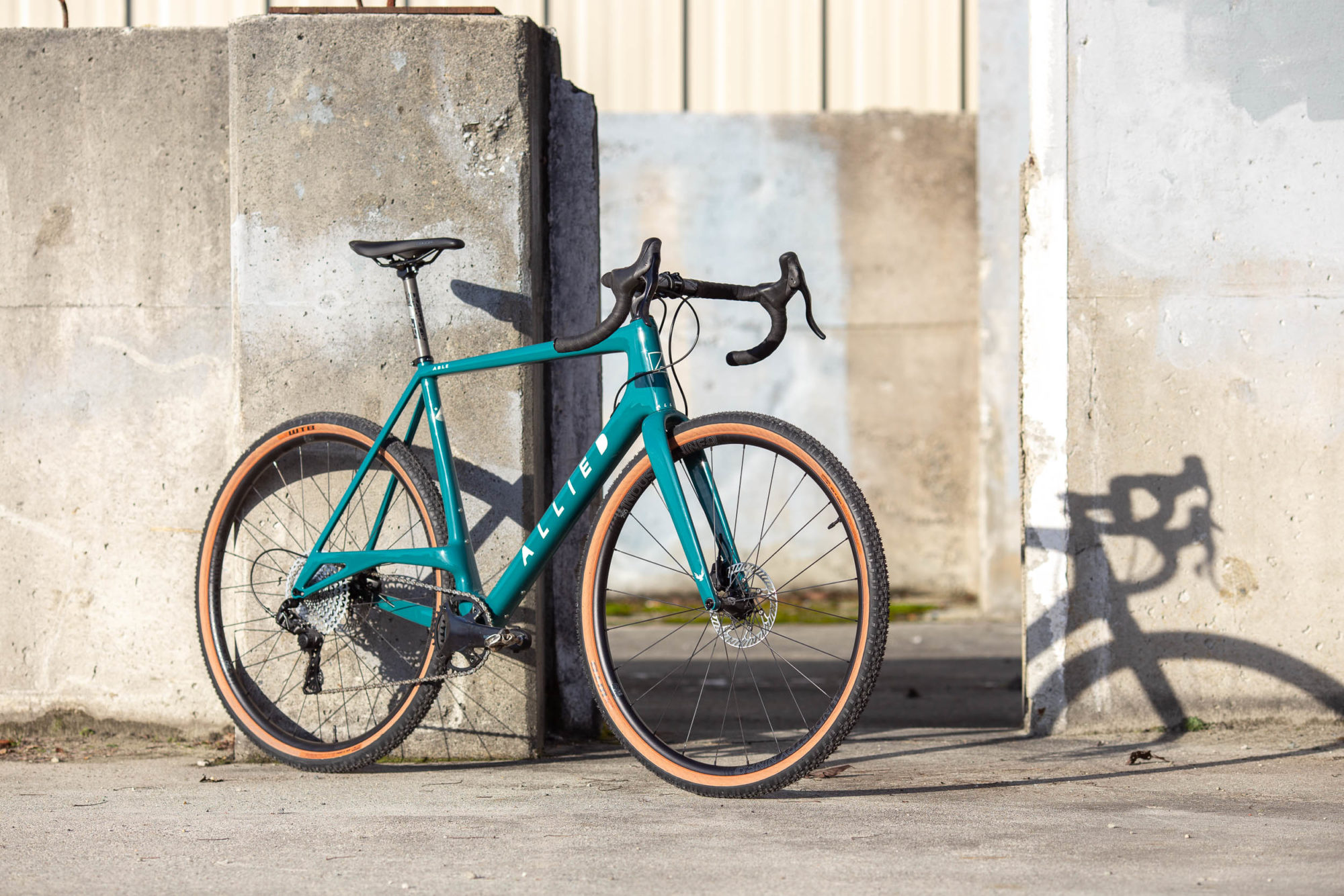
The Able’s potential was solidified during its debut at the 2019 Unbound Gravel event in Kansas. Two Allied-sponsored athletes won the 200-mile route aboard the Able, proving its capabilities on an extremely challenging course. So, before anyone asks, “Why is BIKEPACKING.com reviewing a racy gravel bike?” I’ll address that below.
From its US manufacturing to its elevated drive-side chain stay, the Allied Able is a unique offering on the market, sitting toward the top end in terms of its price. If you’re looking for big bags, extra cages, and rack mounts, this might not be the review for you. However, if you’re looking for something to compare against the Salsa Warbird, Cannondale Topstone Carbon, or the Canyon Grizl, you may want to keep reading.
- Highlights
- Frame/fork: Carbon/Carbon
- Angles (L): 71° Headtube, 73.25° Seattube
- Stack/Reach: 597mm/396mm
- BB Drop/Chainstay: 70mm/420mm
- Bottom Bracket: Threaded 68mm
- Hub specs: 12x100mm / 12x142mm, TA
- Seatpost: 27.2mm
- Max tire size: 700 x 45mm
- Price: $6,300 – $10,000 USD
Design and Features
The Able is a full-carbon, performance gravel bike made with a polypropylene material called Innegra layered in high-stress areas (top tube, chainstays, and fork) to provide better impact resistance and ductility. This combination allows Allied to get the strength-to-weight ratio that standard carbon layups are known for but with the added benefit of a more robust frame.
Allied uses an elevated chainstay to maintain a compact rear end, a standard 68mm threaded bottom bracket, a narrow Q-factor, and clearance for 700 × 45mm tires in the rear and 700 × 47mm up front. Allied admits that a wider bottom bracket would allow for more tire clearance, but that’s not really the focus of the Able, and the performance benefits of a narrower, road-like pedal stance outweigh that of bigger tires. Although I tend to gravitate toward gravel bikes with at least 50mm tires, there is certainly something to be said about Allied’s performance-driven approach.
While you won’t find rack mounts or any other provisions, the Able does have two standard bottle mounts plus an additional set under the downtube, as well as fender mounts and bosses for a bolt-on top tube bag. It certainly doesn’t scream “load me up and tour across the country,” but it’s well equipped for huge day rides or ultra-endurance events where sleeping isn’t a priority. It has internally routed cables and thru-axles and is only compatible with 1x drivetrains due to the elevated chainstay and seat tube shape.
Built For Speed
Everything about the Allied Able I tested affirmed its position as a lightweight gravel race rig. The build kit I tested was impressively lightweight and performance-driven, especially when paired with its US-made carbon frame/fork. The elevated chainstay increases stiffness in the rear end, which results in a responsive and powerful ride quality on any type of road. Its geometry is on the sportier side, with snappy handling and a nimble ride quality that’s vastly different than the longer, mountain bike-inspired gravel bikes we usually review. As an example, the recently reviewed Landyachtz AB-ST has a wheelbase that’s nearly four inches longer than that of the Able. Anyone coming from a road background will find the Able to be responsive and agile, while mountain bikers or anyone new to sporty drop bar geometry may find it twitchy at best.
As far as geometry, the Able doesn’t throw any major curveballs. The chainstays are short at 420mm, the relatively steep 71° headtube angle is comparable to other modern gravel bikes, and it has shorter stack and reach numbers than bikes that fall into the same category, including the Canyon Grizl, Salsa Warroad, and Norco Search XR. The Able has 66mm of trail across most sizes, resulting in a light, reactive feel that’s very noticeable at low speeds. Because of this, I found the Able to feel most natural at high speeds.
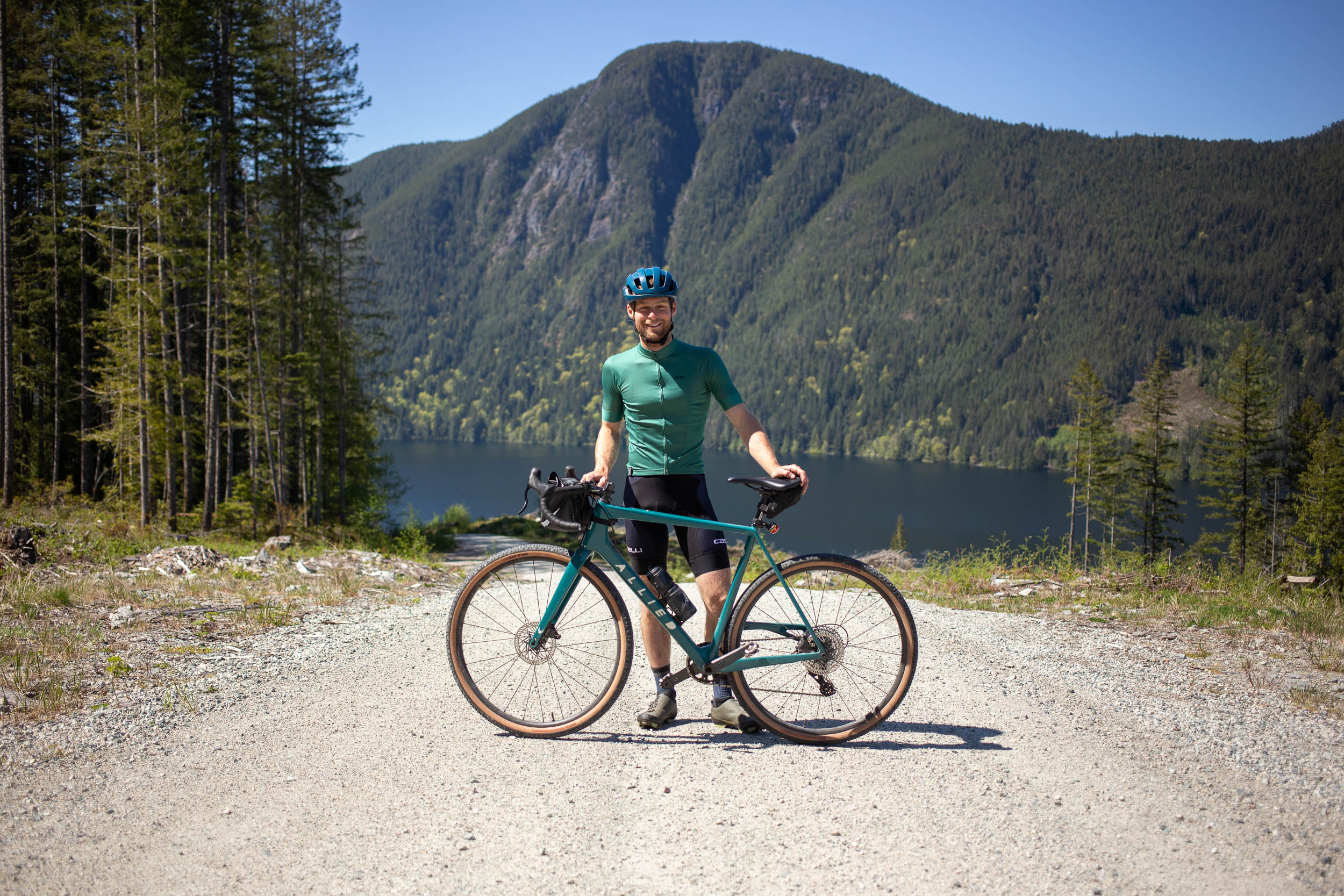
Even though Allied claims the Able has clearance for 47mm tires up front and 45mm in the back, the 42mm WTB Resolutes specced on my demo bike didn’t leave much room for imagination. While the fork had some clearance, the rear end was uncomfortably tight. In fact, Allied states that the Able is optimized for 40mm tires, which seems more appropriate and lends itself to its speedy demeanour.
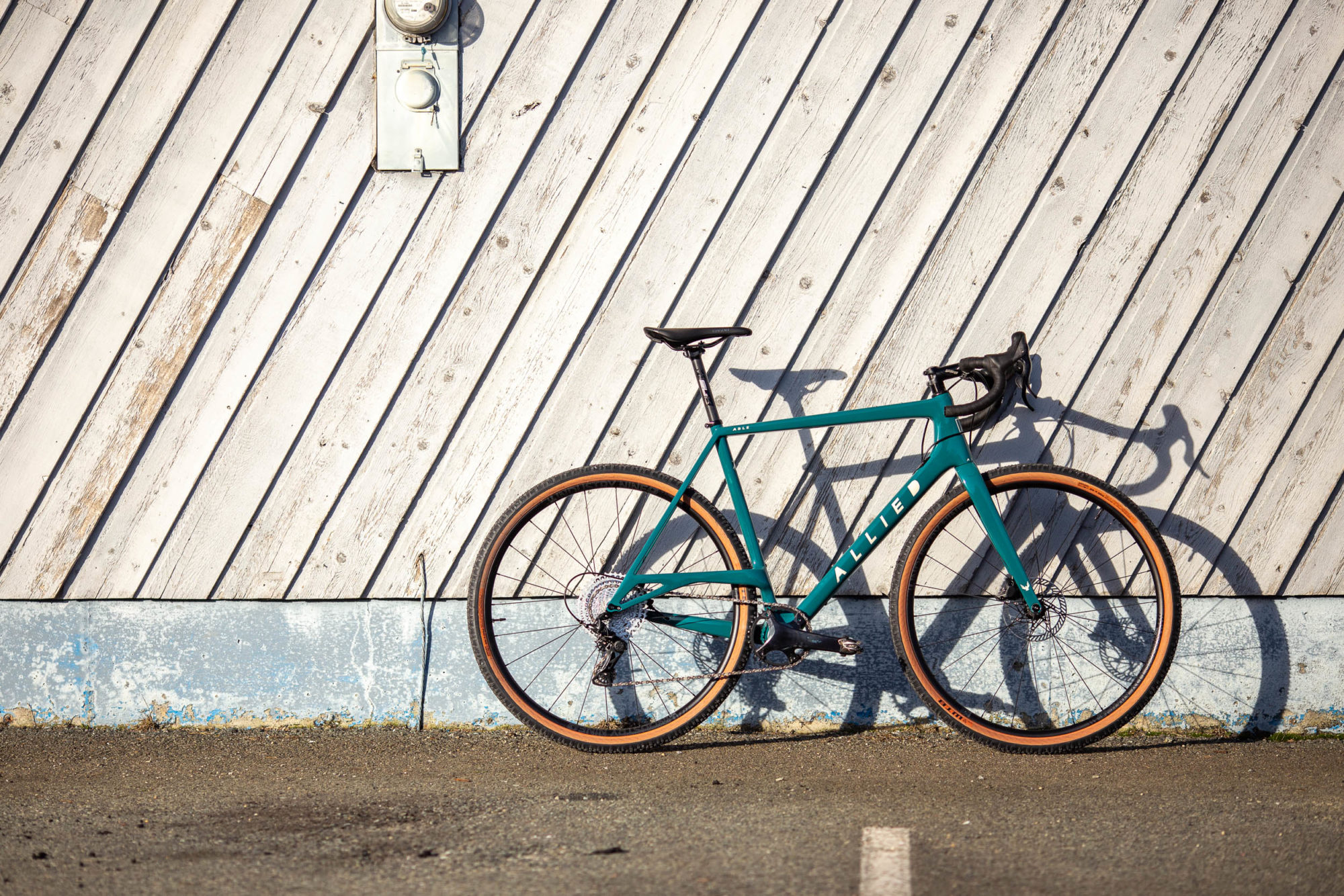
Thoughts From a Speed Demon
I’ve been dealing with some frustrating neck and low back pain, so I turned to my friend and seasoned racer Phil for a second opinion on the Allied Able. It’s not an upright ride by any means, so in an effort to help my body recover, I loaned Phil the Able for a few weeks. Phil is incredibly athletic, likes to go fast, and puts in big efforts on a near-daily basis. All of my hardest and fastest rides have been spent behind his rear tire, so I was excited to get him on out on the Able. In fact, our original plan was to have Phil set out on an individual time trial on the Tree to Sea Loop on Vancouver Island, but timing didn’t work out. I asked Phil a few questions to see what he thought after logging somewhere close to 500 kilometres on the bike.
Tell us about yourself and where cycling fits into your life.
I tend to see myself as a bit of an endorphin junkie, a real type-2 fun kind of guy, whether I’m racing or just tackling some solo objectives. Lately, I’ve been finding my fix largely through trail running, but also spend a good chunk of time riding bikes, whether that’s trail, XC, gravel, or road. Because of where I live on the BC coast, I tend to mix it up a lot, but I love getting out on the gravel bike to put in some good efforts while also exploring some amazing wilderness. A perfect ride has me in the saddle for several hours, lots of climbing, sweet views, lake swims, and yummy treats. Even better if I’m bikepacking and can repeat that day after day.
Generally speaking, how does the Able compare to bikes you’ve ridden in the past?
The geometry and feel of the frame most closely resemble my carbon road bikes: fairly stiff and responsive and evidently built to ride far and fast. The raised chainstay makes it seem like the bottom bracket would have some flex while riding, but I didn’t notice it on any of my outings. The size large frame meant that my position wasn’t very aero, but with the stem slammed down, I enjoyed the comfort of a semi-upright position that still allowed for aggressive riding. Compared to the CX bike that I typically use on gravel rides, the Able was much more efficient on roads and hard-packed gravel, especially when riding at higher speeds.
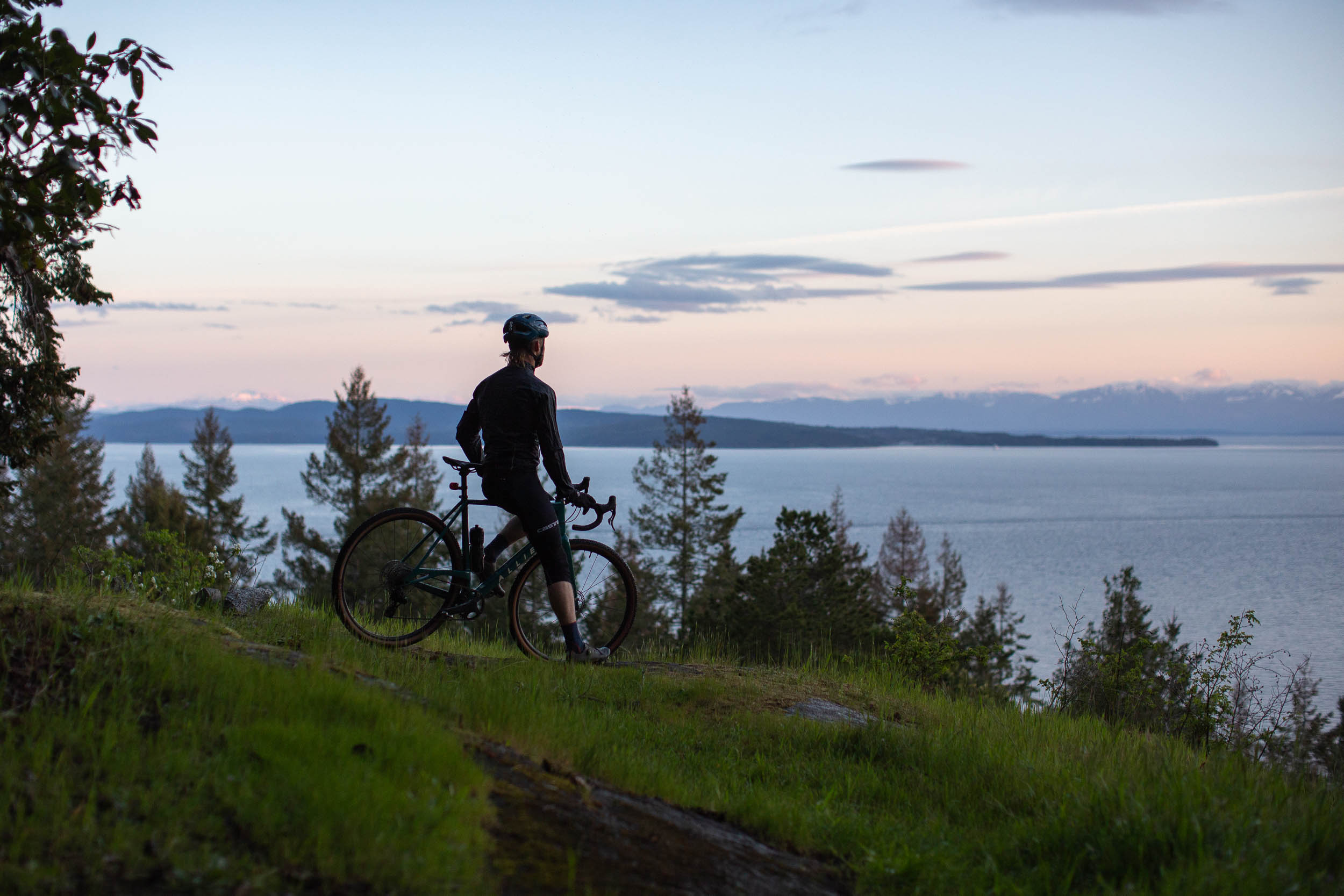
What kinds of rides did you get out on with it?
I pretty much threw everything at this bike. Roads, hard-packed gravel, loose chunky stuff, muddy double-track, XC single-track, and I even rode down a few trails that would have merited a dropper post and suspension. Mostly shorter rides, but I got out for a few around 100 kilometres, all single-day efforts. Overall, it was fun and reliable on all terrain. The tires left something to be desired when things got slick or particularly loose, but that is to be expected with a setup that’s more focused on lower rolling resistance. The Able was easy to maneuver when trails were tighter, and really shined on the straights, with the Industry Nine wheels being super efficient and remaining true despite a good deal of abuse.
What were your first impressions?
Stiff and fast! And oh so pretty. The Able is beautiful and rides like a dream. From the first pedal stroke, you can tell this bike was made to race. I did, however, take a bit of time adjusting to the overall height. The seat tube length is almost the same as my road bike, but the bigger tires and slightly taller head tube made me feel much higher off the ground. I think my preference would have been to get one frame size smaller and play with heights with seatpost and steer tube length, but my roadie background no doubt influences that preference.
I like the feel of Campy in general and run 2×11 Athena on my road bike, so I’m very much used to their groupsets. The 13-speed Ekar did seem to be a bit finicky to fine-tune the shifting perfectly. I imagine having so many cogs means you’re more likely to notice when the alignment is off, and I found that the derailleur hanger was a little softer than others I’ve encountered. Once I got it all figured out, the drivetrain ran nice and smooth and I enjoyed the range of gears at my disposal.
What do you feel the Able does best?
The Able wants to be ridden fast and far. The combination of frame and wheel stiffness is perfect for hard gravel and dirt, anywhere from flat terrain to big climbs. It’s a true gravel racing bike that’s versatile enough to tackle pretty much anything where suspension or super wide tires aren’t required.
How did the build kit work for you during your test period?
When properly adjusted, the Campagnolo Ekar 13-speed groupset was a real joy to ride. Combined with Industry Nine wheels, the drivetrain engages quickly and allows for efficient power transfer. Shifting is similar to other Campy groupsets, except the thumb paddle is enlarged to make shifting down easier while in the drops. I really appreciated that feature since it’s not always easy to shift hand position while on gravel. The thumb shifter also only goes one cog at a time, which is a good thing since the multi-shift option on their road derailleurs can be hard enough to use properly on tarmac, let alone on bumpy gravel. It took me a bit longer than usual to dial in the derailleur alignment perfectly, partly due to a bent hanger, but eventually got it set and didn’t have to make any other major adjustments.
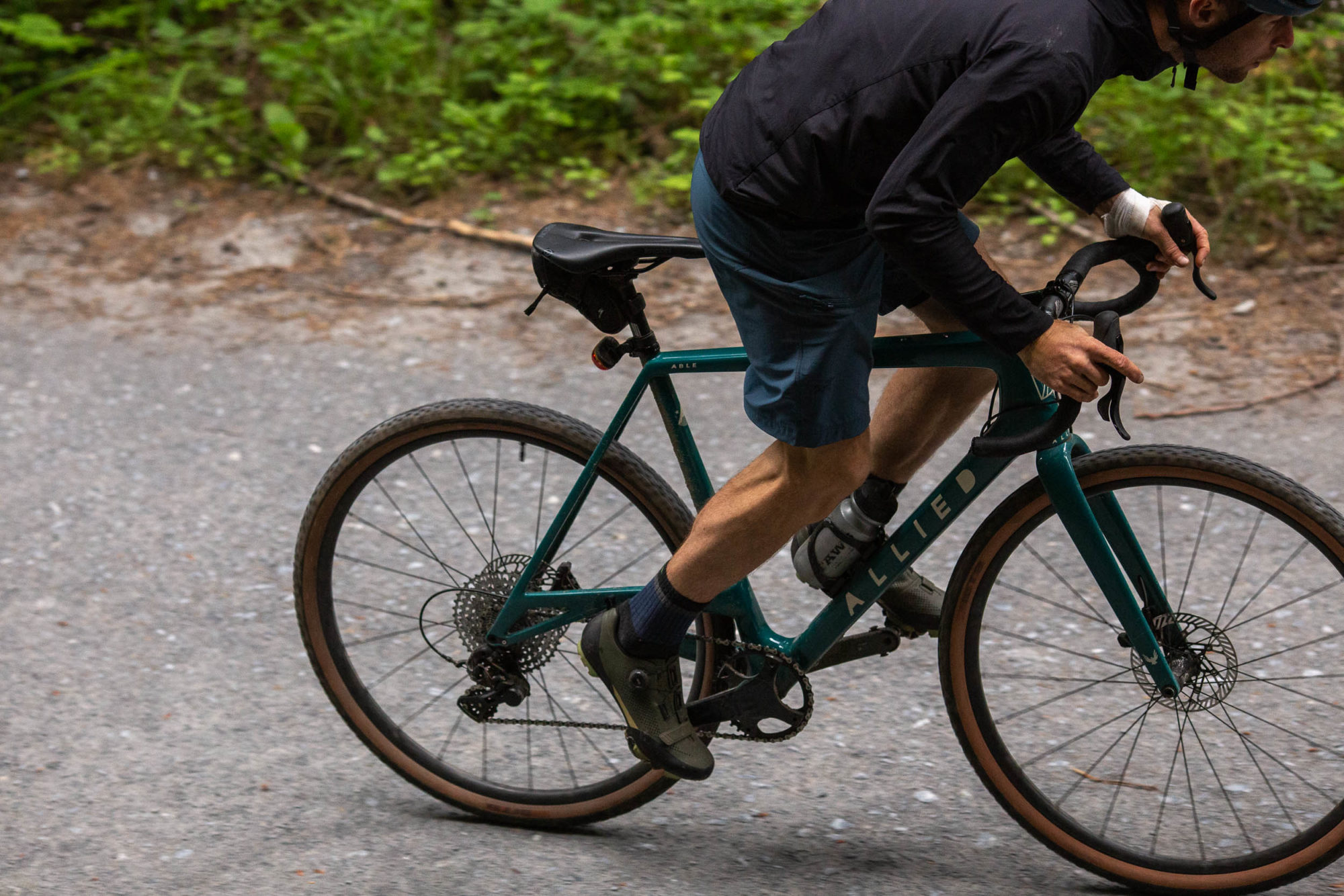
The cassette included in this build is their Gravel Adventure option (10-44T), which despite the large range of cogs, provides the rider with minimal jumps, especially in the lower end of the range. This was really nice when riding hard, since it was easy to find the right gear for the effort—something that can be tough on 1×11 drivetrains. With the 38T chainring included in this build, the bike could pretty much climb anything traction would allow, with the one drawback being spinning out at higher speeds. Since the roads are generally very rough and loose in my area, I was okay with the tooth count, but if you ride more compact gravel with rolling hills, one of the bigger chainring options would be preferable.
I absolutely loved the Ekar brakes. As my first hydraulic drop-bar rig, I don’t have much to compare it to, but I had full confidence in the braking power in all conditions and never had any issues with rotor rubbing. They do squeak when wet, but that’s a minor complaint compared to their reliability. Going back to my mechanical brakes has been an unfortunate reality check.
The Industry Nine UL250 CX Alloy wheels ran super smoothly with a nice and crisp rear hub and stood up to some serious beating over the course of this trial, running true all along. Combined with the 42mm WTB Resolute tires, I felt really efficient on gravel and roads. The tires did lose traction when things got steep and loose, so I’d take that into consideration if I was going to be riding more trails and quad tracks, and in muddy conditions I did get some build up where the wheel passes through the chainstays, since tire clearance there is minimal. Overall, I’d say the setup works really well for its intended use. It just might be worth buying knobbier tires if you’re feeling adventurous.
Who should buy an Able?
The Able is ideal for riders who prioritize gravel racing and those who are more performance-oriented in their endeavours but appreciate a bike that can also be used for some light bikepacking or perhaps some long-distance FKTs. It rides really well on pavement, so it’s great for those who need to spend a good deal of time on paved roads to access gravel.
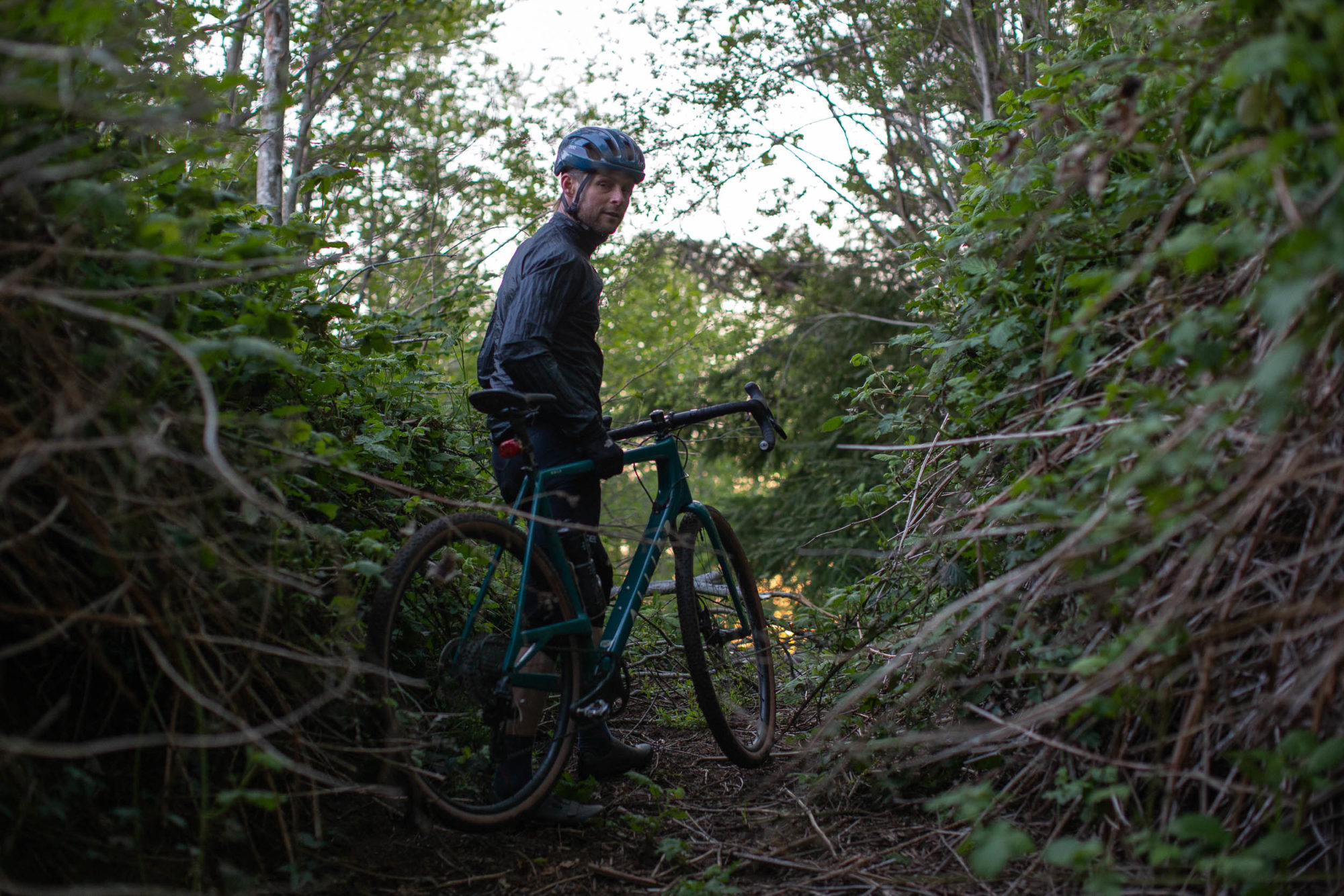
Build Kit
The Able is offered in several high-end complete builds ranging from $6,300 to $10,200 USD. The $7,600 Ekar build Allied sent me is based around Campagnolo’s 13-speed drivetrain, Industry Nine wheels and hubs, slightly flared bars, and a flashy Miami Vice Green paint job. They offer the ability to customize complete builds, including everything from seatpost, handlebar, wheels, and tires, as well as frame and logo colours. Allied also offers the Able as a frameset for $4,200.
Allied Able Ekar Build Kit
- Frame Allied Cycle Works Able
- Fork Allied Cycle Works Able
- Bottom Bracket Campagnolo Pro-Tech Threaded, Threaded 68mm
- Crankset Campagnolo Ekar 38T
- Shifter Campagnolo Ekar Ergopower, 13-Speed
- Derailleur Campagnolo Ekar
- Cassette Campagnolo Ekar 13-speed, 10-44T
- Chain Campagnolo Ekar E13
- Brakes Campagnolo Ekar Flat Mount Calipers
- Brake Rotors Campagnolo Ekar AFS, 160mm
- Wheels Industry Nine UL250 CX 700
- Front Hub Industry Nine Torch, 12x100mm
- Rear Hub Industry Nine Torch, 12x142mm
- Tires WTB Resolute 700 x 42mm, Tubeless Ready
- Handlebar FSA K-Force Compact
- Handlebar Tape Arundel Gecko
- Stem FSA Energy
- Seatpost FSA SL-K Carbon Seatpost, 27.2mm
- Saddle Ergon SR10 Comp Men’s Saddle
I think Phil nailed the description with his thoughts on the Able Ekar build kit. The Ekar drivetrain and brakes are really something and live up to the somewhat mystical hype they’ve created since their 2020 release. The 10-44T cassette Allied specs provides the lowest gearing out of Ekar’s cassette options, and like the others, it’s built from two CNC-machined steel clusters. Paired with their carbon crankset, which has a narrower Q-factor (compared to Shimano GRX cranks), the result is a precise and efficient drivetrain that dishes out some serious performance. Campagnolo refers to the 38T chainring as their “adventure” option, and they also offer 40T, 42T, and 44T rings. Unlike my speedy friend Phil, I didn’t have issues with spinning out and would probably reach for a smaller chainring to make climbing easier—especially if I was loaded up for a long day of gravel.
The Ekar shifters are comfortable and make a lot of sense for a gravel-specific drivetrain. The hoods have texture in the rubber for extra grip, the reach adjustments make it easy to dial in the fit, and the brake levers have a subtle curve that hooks your fingers. The redesigned Lever took some getting used to but quickly became a new favourite. The large C-shaped lever makes it easy to reach with your thumb while in the drops and has a snappy positive feel that never left me second guessing a shift. While the inside thumb shifter only shifts one cog at a time, the main shifter still allows for a quick three cog up-shift in a single movement—a handy feature when a steep climb presents itself without warning.
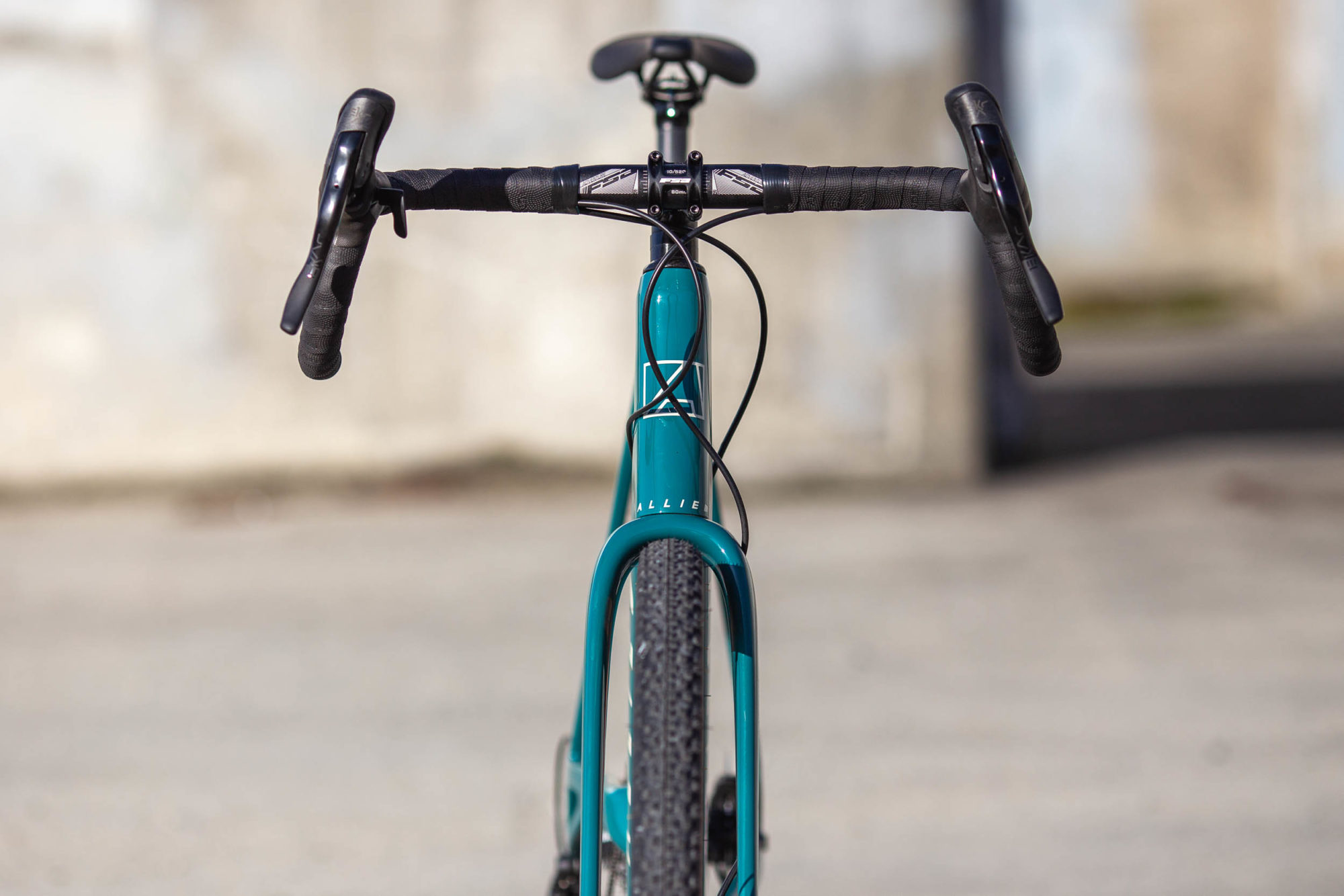
So, Who’s it for?
While the Able might have the biggest tire clearance or most off-road geometry in Allied’s lineup, it’s still heavily inspired by their more road-focused bikes. It’s unapologetically fast, stiff, and efficient on most terrain.. Those who’ve spent more time on road bikes will be right at home on the Able, opening up all sorts of new terrain with its stable yet responsive geometry. Mountain bikers or those who don’t plan to do much racing might find it twitchy and undergunned as a do-everything bike, but it would make one hell of a training bike for putting in big, fast miles after work and on weekends.
Considering the race venue where Allied decided to debut the Able, it’s not really a question of who it’s for, but rather if they did it right. The short answer is yes. From a bikepacking perspective, it might not be the Swiss army knife of gravel bikes, and it likely wouldn’t be my first choice if hauling gear was part of the plan. I respect that Allied doesn’t make any far-fetched, lofty claims and instead sticks to what they know and do well.
Pros
- USA-made frame and fork
- Stiff and efficient ride quality that begs to go fast
- A few extra mounts but nothing you wouldn’t use
- Customizable builds and paint jobs
- All the latest tech, including a Classified Powershift 2 speed rear hub build
Cons
- Limited tire clearance compared to other big-tired gravel bikes
- Not compatible with 2x drivetrains
- Expensive
- Twitchy at low speeds
- Not particularly versatile
- Model/Size Tested: Allied Able Ekar, Large
- Weight: 19.5 pounds (8.8kg) with XT pedals
- Place of Manufacture: Arkansas, USA
- Price: $7,610 USD
- Manufacturer’s Details: AlliedCycleWorks.com
Wrap Up
It’s exciting to see such a high-quality carbon bike being manufactured in the USA. It might not be the most bikepacking-friendly rig we’ve tested here on the site, but it’s certainly a testament to what Allied knows and what level of cyclist they’re catering to. The Allied Able is fast, nimble, and fun to ride anywhere 45mm tires can take you. Even if it’s a stretch to consider the Able as a true bikepacking rig, Allied’s attention to detail, unique design elements, and impressive overall quality don’t go unnoticed and make the Able worth highlighting here. If you’re planing on some serious training or signing up for some big gravel events, the Allied Able won’t let you down.
Please keep the conversation civil, constructive, and inclusive, or your comment will be removed.







